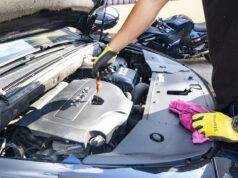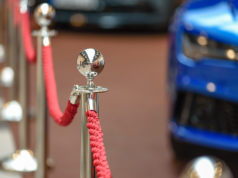Customer service is vital in all purchases, but it’s arguably most important with expensive ones, such as a car. After a house, a car is most likely going to be the most expensive purchase you ever make.
It’s a rare occasion that someone would go out in the morning time, on a whim, and come home with a new set of wheels. A study has found that the average car buyer spends around 14 hours researching online, reading reviews and visiting dealers’ websites before making their decision.
It’s become apparent that combining good quality customer service, (a concept we have become accustomed to), with purchasing a car, is key to sale success.
If you revert to almost a decade ago however, Britain was considered one of the worst nations for customer service in the western world. We as customers didn’t know how to receive it, while in similar fashion, salespeople didn’t know how to deliver it, or simply didn’t want to. It all just seemed a little too ‘American’.
In fact, Michelin-starred chef Michel Roux Jr. summarised the service here in the UK as “surly, slapdash and dreadful,” and his comments weren’t unfounded either. Research has discovered that UK businesses lose around £12 billion every year simply due to poor customer service.
“It isn’t just costing business’ financially either. Their reputation is at stake, particularly online. 16 to 24-year-olds are the most likely to be vocal online regarding customer service, with one-third of the demographic suggesting they would be posting a review on the internet if they received poor customer service.
However, since 2010 the UK has begun to establish itself as a major world player in terms of customer satisfaction. The Zendesk’s Customer Service Benchmark world rankings places the United Kingdom fourth, with a rating of 96.2%.
Herewith Lookers, who offer a wide range of vehicles such as the Mercedes Gle, we assess customer service in the automotive industry.
Stage 1 — Digital
Most websites now use (AI) Artificial Intelligence, tracking a potential customer’s journey through their website, so they can send through a pop up asking, “is there anything we can help you with today?”. Once the potential lead responds, they get linked through to a member of staff and the ball is set in motion.
This highlights that using technology, the customer service experience is simply being extended. As the automotive industry knows two-thirds of decisions are made online, they can no longer depend on their salesman using their relentless charm to guarantee each and every sale, as the lead may never come through the door. Instead, the initial ‘meet and greet’ is carried out in the comfort of your own home.
Stage 2 — On the day
Perhaps one of the most obvious factors when making a sale, however one that is often forgotten, is connecting with the customer and wearing the likes of name badges to add that personal touch. A report carried out by We Are DMA concluded that car dealerships that are able to connect with customers on a personal level are gaining the strongest levels of engagement.
The technical jargon that in the past may have been able to completely mind boggle a customer because they were unaware as to what it meant, is now readily available for their access online. Harley Davidson’s John Russell notes, “the more you engage with customers the clearer things become and the easier it is to determine what you should be doing.” By speaking to the customer on a level of mutual understanding, both dealer and buyer are benefiting.
When asked what determined their favourite car brand, although respondents ranked quality as the highest with 45%, one third pointed to the company being friendly, helpful and welcoming. Despite the fact the journey may start online, 59% still bought their most recent car in a dealership, meaning a focus on the development on the customer service at those initial two stages of contact will prove detrimental in the ultimate success of your overall retail performance.
An alternative study carried out by Maritz Research which quizzed customers on their automotive purchasing experience discovered that just under 75% of customers were satisfied overall with the service they received. Similarly, the vast majority rated their dealings with the sales department as the most important aspect.
Stage 3 — Down the line
Only a dodgy salesman would see the pen landing on the dotted line as the end of the experience; this is just the beginning, particularly if this is the first time the customer has bought this brand or from this dealership. This is where customer service needs to excel, and the quality of the product can really shine. In reality, the odds are stacked against a car going through its lifespan without some form of issue.
Even if your car does miraculously make it through unscathed, it still needs a regular service, and for a dealership, it is all about ensuring the customer comes to you. This is when the digital aspect can prove its worth once again. By providing customers with details online of simple things like changing the oil, navigating a jump starter etc, the honesty that is ranked so highly by the customer is installed.
However, by also suggesting how much easier it would be to drop it in, grab a coffee and have it done by one of your fully-fledged mechanics, you are catering for every customer need. A dealership runs the risk of the customer not getting an oil change, but they’ll develop a love for a brand and return when replacements are due.
In terms of that all-important after-sales care, Audi has recently shown their way of going above and beyond. The revolutionary Audi Cam offers customers the chance to see exactly what is happening to their car whilst it is in the garage, as one of the members of their service department will walk around with a selfie camera, showing the various alterations that are being made.
Customer service in the UK, until very recently, has been light-years behind the rest of the world. Its successful application, however, produces massive positives. When we are on the receiving end of high-quality customer service, just under three-quarters of us are likely to recommend the company to a friend, whilst half of us would become a frequent customer of the brand.














